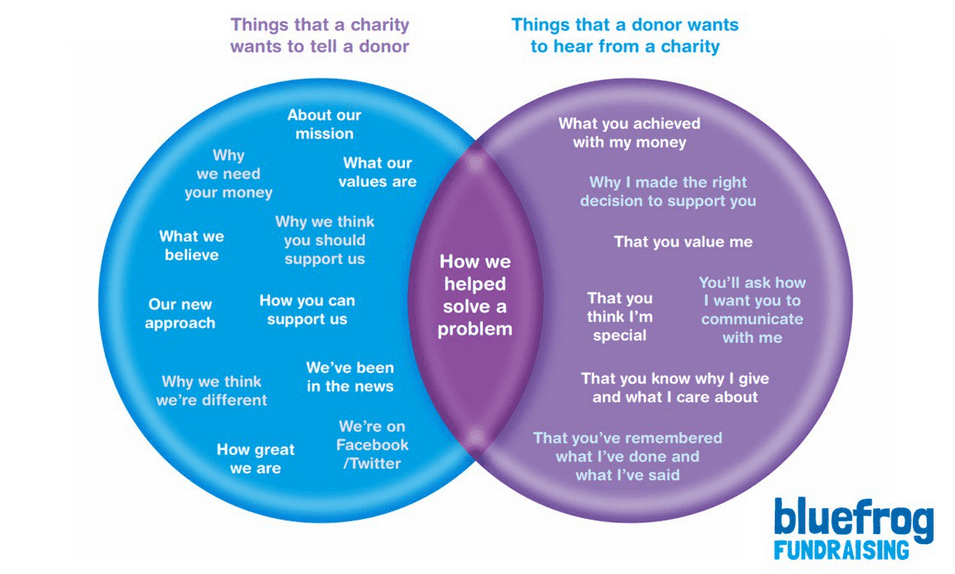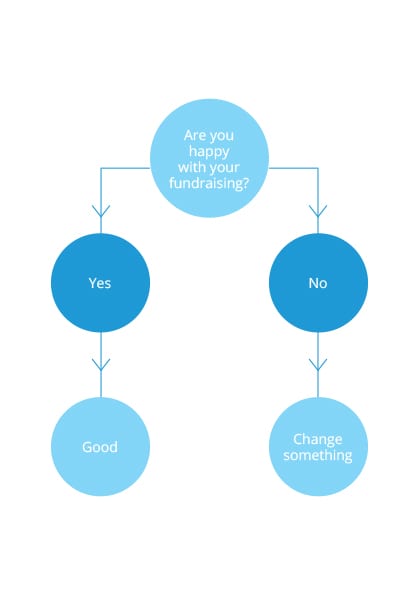What should you do with newly recruited Haiti emergency donors?
There have been a number of posts in the blogosphere offering advice about what charities should do with donors recruited in response to Haitian earthquake appeals.
Traditionally, emergency donors are very hard to retain, often only surfacing during the next high-profile disaster.
So any advice on how to improve conversion rates is useful stuff.
Jeff Brooks and Steven Screen dedicate a whole podcast to fundraising around the Haiti earthquake. You can download this via itunes or by clickinghere.
Jonathan Grapsas, recommends making the second ask very quickly. His colleague, Sean Triner, wrote a piece for Fundraising and Philanthropy Australia a few months ago that looks specifically at the issue of converting emergency donors. As well as advocating speed, Sean details a five point disaster conversion plan that is well worth implementing.
He refers to the advice of Leo Orland from Australian fundraising agency,Robejohn. Leo also sees speed as essential, recommending donors are thanked immediately. At the same time they should be promised feedback and told when to expect it. Excellent advice.
But I think it is useful to look at what exactly we should be saying in these communications.
With conversion, content really is king and developing the right strategy shouldn't be left to chance.
I've been doing some research on what strategies were used following the tsunami emergency in 2004 to see if there are any lessons to be learned. I've found a great piece by Tom Pope that looks at a number of US organisations and how they approached the loyalty building process. It's a long article so I'm highlighting the key points of each strategy and the results. You should definitely read it in its entirety here as it contains loads of interesting information. Additional material comes from Fundraising Successmagazine.
International Rescue Committee (IRC)
Tsunami strategy
- Focused on the organisation rather than the emergency.
- Rather than create a tsunami based emergency recruitment pack, they used a long-standing control pack that focused on work in Sudan.
- They added an additional tsunami focused insert in the pack.
- New recruits were thanked and welcomed to the IRC.
- Feedback was provided by monthly online and DM communications.
Follow up appeals
- Tsunami donors were thanked for supporting the IRC's tsunami relief work and showed how their money had been used before new work was covered).
- Non-tsunami donors received the standard communication without the tsunami focused thanks and feedback.
Results (based on response to one DM appeal based on work in Sierra Leone)
- 8.6% response for the tsunami donors
- 4.6% response for non-tsunami donors
Tsunami strategy
- Focused on CARE's wider mission to fight poverty.
- New emergency donors were sent "preference cards" so they could control subsequent communications.
- Welcome materials with the message about CARE's wider mission were also used.
- Feedback was provided after 100 days and again at 6 months.
Follow up appeals
- Communications were focused on "Poverty is the silent tsunami".
- The strategy was to "…gain support for any poverty that makes people susceptible to a crisis".
Results (partial year communications only)
- Previous retention rates for emergency donors stood at 22% (compared to 42% for non-emergency donors).
- 8% of tsunami donors had made second gift against an expected rate of 9-10% at the same stage in the appeal cycle.
- Predicted 22% normal emergency retention rate would not be achieved.
- Adam Hicks, Vice President of marketing and communications thought their approach had improved retention…
Catholic Relief Services (CRS)
Tsunami strategy
- Followup communications told the donor "about the organisation as a whole".
Follow up appeals
- CRS had no online programme, so emergency donors were converted to a DM communication stream.
- Communications were revamped. They included:
- A reminder for donors telling them how generous they were
- Reports on how money had been used
- Thank you calls (using a combination of live operator and taped messages).
Results
- 8% of tsunami donors made a second gift against a 'normal' rate of 32% – 33%.
- Second gifts were high with an average of $150 or more.
- Best responders were originally recruited from the web or through unsolicited postal donations.
No detailed analysis but..
Steve Denne, Vice President for development operations says online donors were opting out at a far lower rate than in previous emergencies.
Direct Relief International (DRI)
No detailed analysis but…
41.000 were recruited at the time of the tsunami. Mainly from TV reports.Donors were given access to the standard communications programme of an online newsletter updated on a bi-weekly basis.
No second appeal results but things look positive. Many corporate donors came back to support work surrounding Hurricane Katrina. Over $2.3 million was received without any marketing support.
Strategy to convert online donors was to bond them to the organisation through…
"…direct mail, online strategies and reporting back quickly to them, an in the same way they reached you…when you ask them for a gift, you have to give a compelling story about why the gift is needed, and you have to recognise their help."
Tsunami strategy
Created a separate monthly giving programme that focused on converting emergency donors by highlighting three emergency issues faced by the organisation – immediate response, reconstruction and emergency preparedness.
Follow up appeals
- One month after giving donors received a feedback postcard.
- After two months donors received an in-depth newsletter focusing on Oxfam's response to the crisis.
- After four months donors received a request for a regular gift…
- Donors who gave via the web were emailed.
- Donors who gave via the telephone were called.
- Donors who gave via the web were called.
Results (conversion to regular gift)
- Emailed web supporters – 0.2%
- Telephone supporters who were called – 7.5%
- Web supporters who were called – 13%
So what does all this mean?
One of the ongoing themes of this blog is the concept of donor needs. By answering them, we can build loyalty and raise more money.
One incredibly important need is for personal growth – in part, this means to reaffirm a donor's self-image. This can be answered by showing them exactly what they helped achieve. This seems to be what the IRC did.
All things weren't equal for charities or their donors, but the IRC found that more emergency donors responded to their first warm appeal than those who were recruited at other times. With an 85% uplift, that's quite astounding.
Other charities that chose to lead communications by telling new donors about the wider work of the organisation didn't do so well.
That's because donors care more about what THEY have personally done, rather than what a charity is doing.
Donors give through charities. Not to them.
It's far too soon to see how donors who have given to Haiti will convert to regular support, but some early data shows that it doesn't seem it will be any easier this time around.
The American Red Cross has done fantastically with their Haiti text donations. $26 million had been raised by Thursday the 21st of January. But only about 5% of those people gave the Red Cross permission to contact them again.
As for my recommendations? You know your donors better than anyone and will probably have your own programmes and tests results to draw on. But, for what it's worth, this is what I would do.
- Thank donors quickly.
- Ask donors what they want and how they want it.
- Update regularly with a focus on what the donor has done.
- concentrate on the benefit to a small number of individuals rather than recounting statistics about tonnes of aid delivered (there's a great piece on the power of small numbers over big ones here via@jeffbrooks)
- Use the web where possible, but make sure your emails are being opened.
- Use highly personal direct mail communications
- Show the donor you know who they are. Remind them of the value of their gift and what it has done in Haiti.
- In all future appeals, continue to write about what the donor has done rather than what you, as an organisation, have achieved.
- Use the telephone to convert donors to regular giving.
- Be creative in how you engage donors. If people aren't interested in setting up a regular gift for general work, offer them alternatives…
Consider setting up an emergency fund. Gifts to this will be used for reconstruction and for the next disaster. Feedback on the impact of the donor's actions will build loyalty. From there, conversion to non-earmarked forms of giving will be easier. (I've worked on programmes like this in the UK and they are effective).
If you have donors giving via direct debit who give to your emergency appeals, consider asking them if they would be willing to have a gift automatically added to their monthly gift the next time a disaster strikes.
Many donors who have given to Haiti might be making their first significant gift to any charity, if we show them the impact of their action and make the experience rewarding, we will do more than raise more money for one emergency.
We will expand the universe of people who give to charity, increasing the effectiveness of the whole sector.
And that can only be good for everyone.
And finally, this approach isn't just suitable for emergency donors. The same basic strategy can be used to convert all new recruits.
Tags In
The Essentials

Crack the Code to Regular Giving: Insights, Strategies, and a Special Giveaway!

‘Tis Halloween. Keep to the light and beware the Four Fundraisers of the Apocalypse!

Why do people give? The Donor Participation Project with Louis Diez.

A guide to fundraising on the back of a postcard

What does the latest research tell us about the state of fundraising?








